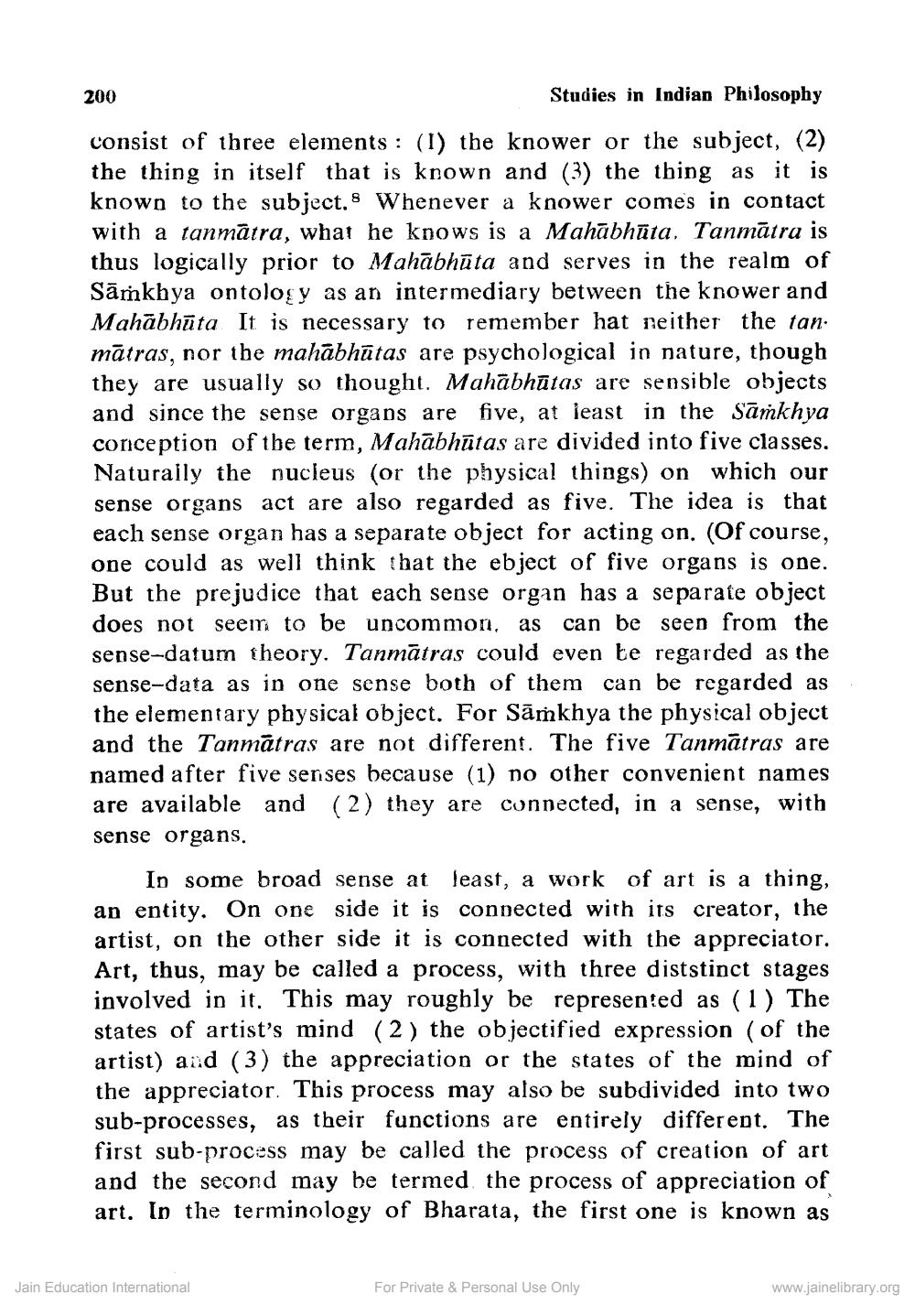________________
200
Studies in Indian Philosophy
consist of three elements : (1) the knower or the subject, (2) the thing in itself that is known and (3) the thing as it is known to the subject. Whenever a knower comes in contact with a tanmätra, what he knows is a Mahābhūta, Tanmātra is thus logically prior to Mahābhūta and serves in the realm of Sāṁkhya ontology as an intermediary between the knower and Mahābhūta It is necessary to remember hat neither the tan. mātras, nor the mahābhūtas are psychological in nature, though they are usually so thought. Mahābhūtas are sensible objects and since the sense organs are five, at least in the Sāṁkhya conception of the term, Mahābhūtas are divided into five classes. Naturally the nucleus (or the physical things) on which our sense organs act are also regarded as five. The idea is that each sense organ has a separate object for acting on. (Of course, one could as well think that the ebject of five organs is one. But the prejudice that each sense organ has a separate object does not seem to be uncommon, as can be seen from the sense-datum theory. Tanmātras could even be regarded as the sense-data as in one sense both of them can be regarded as the elementary physical object. For Sāmkhya the physical object and the Tanmātras are not different. The five Tanmātras are named after five senses because (1) no other convenient names are available and (2) they are connected, in a sense, with sense organs.
In some broad sense at least, a work of art is a thing, an entity. On one side it is connected with its creator, the artist, on the other side it is connected with the appreciator. Art, thus, may be called a process, with three diststinct stages involved in it. This may roughly be represented as (1) The states of artist's mind (2) the objectified expression (of the artist) and (3) the appreciation or the states of the mind of the appreciator. This process may also be subdivided into two sub-processes, as their functions are entirely different. The first sub-process may be called the process of creation of art and the second may be termed the process of appreciation of art. In the terminology of Bharata, the first one is known as
Jain Education International
For Private & Personal Use Only
www.jainelibrary.org




